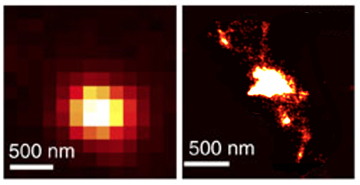Geneticists just got a new pair of glasses.
By improving an imaging technology called FISH, they’ve made it possible to view genetic material in more detail than ever before.
One modification achieves “super resolution” imaging. The other can distinguish maternal from paternal chromosomes.
What the researchers are starting to see promises to help them better understand how DNA gets packaged into chromosomes, how that structure relates to health and disease, what the biological significance may be when genetic material is inherited from one parent versus the other—and more.

“Geneticists have looked at chromosomes for over a century, but they’ve longed for higher resolution and an easier and more affordable strategy for looking at any part of any genome, not just the most accessible regions,” said Ting Wu, professor of genetics at Harvard Medical School and senior author of the study, published in Nature Communications. “With this new technology, we’ve enabled significant steps forward in all those regards.”
“Scientists have a lot of models where we draw in cartoon form what we think is happening,” said the study’s first author, Brian Beliveau, who conducted the work as a graduate student in the Wu lab. “When a region of the genome is silenced, we draw it as compacted. When a gene is expressed, we draw it as more open or active. But we don’t actually know yet what any of these look like.”
“Now we have a tool to start looking at this systematically, which is very exciting,” said Beliveau, currently a research fellow in the lab of HMS associate professor of systems biology Peng Yin at the Wyss Institute for Biologically Inspired Engineering.
